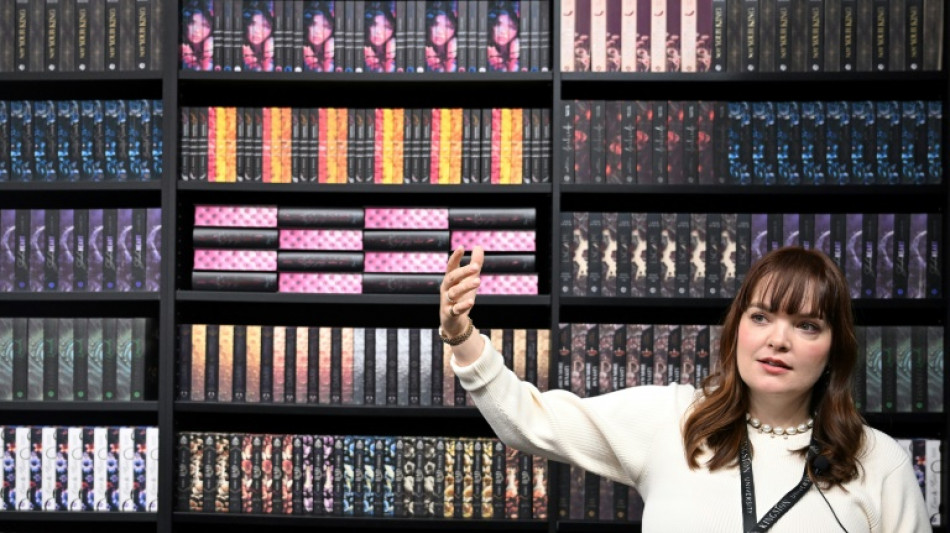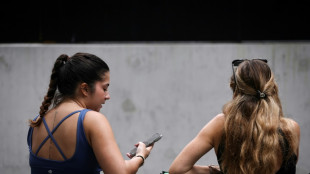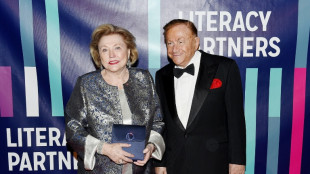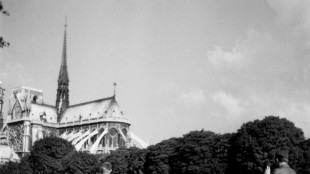

Romantasy and dark college: young readers drive new literary trends
From romantasy to dark college, legions of young readers are diving into eclectic new literary subgenres in a trend turbo-charged by social media.
At the Frankfurt Book Fair this week, fans flocked to colourful stands showcasing "new adult" literature that filled an 8,000-square-metre (86,000 square feet) hall.
The trend has been fuelled by authors and publishers posting on social media, and readers giving feedback, particularly under the hashtag BookTok on TikTok.
"New adult brought me back to reading," Julia Kendall, a 30-year-old teacher, told AFP at the book fair, the world's largest.
"I didn't read at all for a while, then I held my first book by Mona Kasten in my hand and loved it," she said, referring to a popular German author of romantasy -- a neologism of romance and fantasy.
New adult literature is generally aimed at readers aged 18 to 25, and usually contains more mature themes, such as explicit scenes or drug use, that could be considered off-limits for younger audiences.
Some authors have taken on a near rockstar status, with legions of fans who will queue for hours at events to meet them and get autographs.
- Breaking boundaries -
One such popular author is Jane S. Wonda, who has written hit "dark romance" books that fuse elements of traditional romance with eroticism and darker subjects such as violence or drugs.
The 33-year-old, who is self-published, told AFP she believed her works "break boundaries" and represent a shift away from social "over-correctness... towards something more morally grey".
For Wonda, her readers are "very close" and their responses -- particularly on social media -- influence her writing.
"I pay a lot of attention to what feedback readers give to me: So, what do they write to me in messages? What do they respond to the most?"
Astrid Ohletz, who runs the Germany-based independent publisher Ylva, which focuses on lesbian romance books, said the social media-driven buying behaviour of young adult readers was "changing the industry".
"The big publishers are conservative. They know that they need to change -- but they really don't like it," she said.
Ohletz established her own relatively small outfit 12 years ago and sells mainly ebooks, in German and in English, in her domestic market and overseas.
- 'Reading fever' -
Splashy appearance and style are key in "new adult" literature.
Readers want attractive books that will stand out on social media, with publishers striving to produce ever more elaborate covers.
"For a lot of new adult readers, the book is more than just reading material," said Jeannette Bauroth at Second Chances, a publisher that translates books into German that she feels have been passed over by the local market.
Many want "pretty books" to take so-called "shelfies" -- snaps of their book shelves that they post on social media, she said.
Bauroth gave the example of a series of books they published in the "queer sports romance" subgenre with the edge of the pages sprayed with colourful patterns.
But there are concerns in some quarters that the new adult genres "dumb down" literature and encourage young readers toward less serious works.
Some romance books have also faced criticism for being too dark, especially when it comes to how they portray relationships.
"I wish that some of the books were more healthy in their relationships," Ohletz said. "I don't get why they have a tendency to be a bit misogynistic."
However she and many other industry figures at the book fair were broadly positive about a trend they believe is encouraging more young people to pick up books.
Karin Schmidt-Friderichs, chairwoman of the German Publishers and Booksellers Association, said there was "an absolute reading fever" among younger adults.
"They are finding an impulse for reading online... This generation moves naturally between analogue and digital," she said.
M.Fierro--IM



